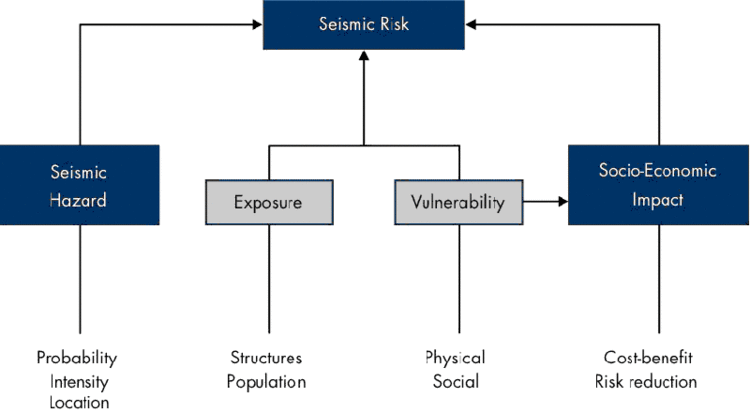 GEM is a public/private partnership initiated and approved by the Global Science Forum of the Organisation for Economic Cooperation and Development (OECD-GSF). GEM aims to be the uniform, independent standard to calculate and communicate earthquake risk worldwide. With committed backing from academia, governments, and industry, GEM will contribute to achieving profound, lasting reductions in earthquake risk worldwide.
GEM is a public/private partnership initiated and approved by the Global Science Forum of the Organisation for Economic Cooperation and Development (OECD-GSF). GEM aims to be the uniform, independent standard to calculate and communicate earthquake risk worldwide. With committed backing from academia, governments, and industry, GEM will contribute to achieving profound, lasting reductions in earthquake risk worldwide.
GEM will be the critical instrument to support decisions and actions that reduce earthquake losses worldwide. All who face risk, from homeowners to governments, need accurate and transparent risk information before they will take mitigating action. By providing the information in a manner that is understandable to all users, GEM aims to raise awareness, lead to adoption and enforcement of building codes, promote seismic mitigation, and stimulate insurance use.
GEM will be the first global, open source model for seismic risk assessment at a national and regional scale, and aims to achieve broad scientific participation and independence.

It will take five years to build the first working global earthquake model – including corresponding tools, software and datasets. The work started in 2009 and will be finished at the end of 2013. Construction occurs in various stages that are partly overlapping in time.
- The pilot project GEM1 (January 2009 – March 2010) generated GEM’s first products and initial model building infrastructure. Global components are going to establish a common set of definitions, strategies, standards, quality criteria and formats for the compilation of databases that serve as an input to the global earthquake model. They are addressed by international consortia that respond to calls for proposals on Hazard, Risk and Socio-Economic Impact.
- Global components will provide preliminary data on a global scale, but on a local scale, regional and national programmes will provide more detailed and reliable data. From time to time Calls for proposals are released.
- Regional Programmes are projects with targeted funding taking place in various regions of the world. One of these programmes is Earthquake Model Central Asia (https://www.emca-gem.org/). It is coordinated by the GFZ and aims at the crossborder assessment of seismic hazard and risk in Central Asia in cooperation with local institutes.
- The data produced on a regional and national scale will be carefully quality-controlled and integrated into the global models. The actual development of the model will occur using a common, web-based platform for dynamic sharing of tools and resources, in order to create software and online tools as end-products. The global earthquake model will be tested and evaluated before its official release; the testing procedure will involve the establishment of scientific experiments that are reproducible, transparent, and set up within a controlled environment.
For more information on the initiative, news, events and background documents, please visit www.globalquakemodel.org.

